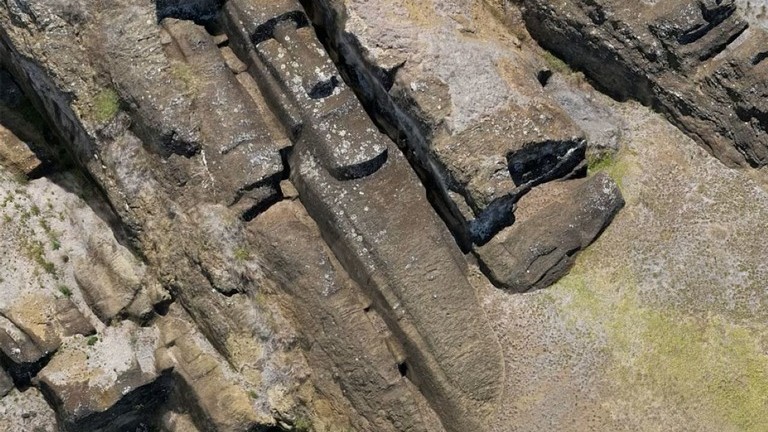数世紀前に遡るイースター島の採石場には、未完成の巨大な石像が横たわっている。
At the quarry on Easter Island, an unfinished giant stone statue lies in a place with centuries of history.
。
According to archaeologists, the 3D model of this quarry may provide new clues about how the statues were made and how Polynesian society at the time created them.
。
This isolated island, also known as Rapa Nui, is famous for its giant Moai statues standing facing the Pacific Ocean.
。
However, at that point, the islanders were unable to build the largest statue in the community, and it might have become the biggest statue.
。
This gigantic stone statue, along with several hundred other statues, still remains buried in the rock of the quarry.
。
The quarry is located on the edge of a volcano called Rano Raraku.
。
According to a study published in PLOS One on the 26th, it is highly likely that the creation of these fascinating Moai statues was carried out individually by each clan.
。
It was previously thought that a centralized authority, which mobilized the entire islands workforce, organized the production of the Moai statues.
。
This time, the researchers analyzed the site using a method called photogrammetry.
。
They overlaid 11,000 drone photos to create a high-resolution 3D model of the Moai quarry at Rano Raraku.
。
According to the researchers, this is the first time such a model has been created.

